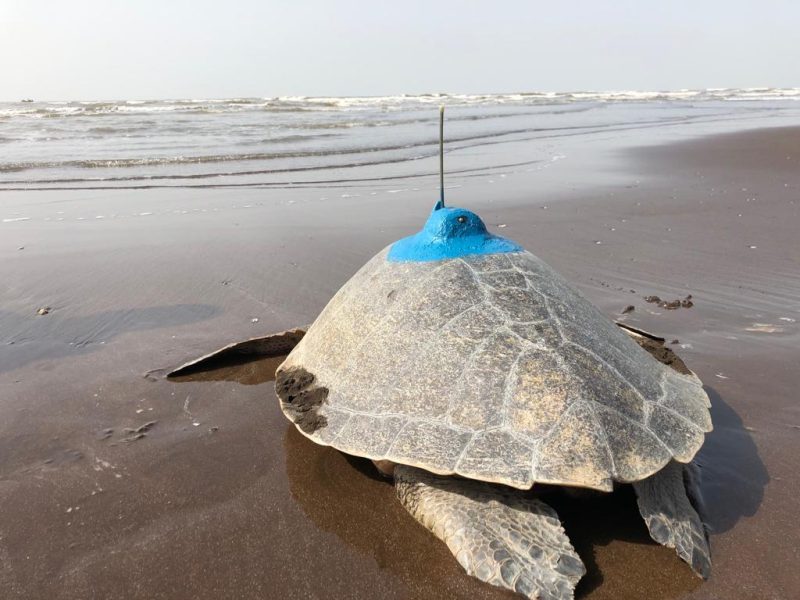
Olive Ridley turtles tagged for the first time on west coast of India

Two Olive Ridley sea turtles have been satellite tagged at Velas coast in Ratnagiri district of Maharashtra to study their movements and provide better conservation solutions for this endangered species.
The Maharashtra coast has been witness to sporadic nesting of Olive Ridley sea turtles, but it is for the first time that an effort has been made to satellite tag a turtle on the west coast of India.
Several locations on the west and east coasts of India are known nesting sites for Olive Ridley sea turtles, arguably the most abundant turtle species in the world, but one which has been endangered because of poaching, trawler fishing and loss of adequate and suitable nesting sites. Its population has declined about 30% globally over the years. Hence, the need to conserve them.
The Mangrove Foundation of Maharashtra, a State Forest Department sub-unit, has commissioned the research project ‘Tracking the migratory movements of Olive Ridley Sea Turtles off the coast of Maharashtra’. A study group under Wildlife Institute of India (WII) will help in understanding the movement pattern of Olive Ridley Sea Turtles off the coast of western India.
Also read: Climate change cause for more ‘divorces’ in sea birds – Study
Till now Olive Ridley sea turtles have been tagged only on the east coast of India. The first tagging in Odisha happened in 2003 and has been carried out several times since then. Mohan Upadhye, a turtle conservationist from Velas where the satellite tagging happened recently, said, “Tracking movements of turtles in Odisha threw some interesting observations. It was found that while the female would come to Gahirmatha in Odisha to lay eggs, it could travel as far as Sri Lanka in search for food. Unfortunately, we conservationists on the west coast of India have no clue about how far turtles that lay eggs here travel and where do they stop. It is believed they travel up to South Africa in search of food. But we have no evidence. Therefore, the need for satellite tagging.”
Virendra Tiwari, who heads the Mangrove Foundation in Mumbai, said, “We are employing scientific methods to help track the movement of this turtle, named Prathama (the first one), and provide loads of scientific data to study their behaviour and challenges better.”
A total of 5 Olive Ridley Sea Turtles are to be satellite tagged under this project of which the first two (including Prathama) were tagged in Velas recently. This exercise signifies the start of a new era in sea turtle conservation in Maharashtra, Tiwari added.
Harshal Karve, a marine biologist with the Mangrove Foundation of Maharashtra, who is spear-heading the west coast tagging project, said, “The need for tagging turtles was felt because we do not know where they go after laying eggs and how they manage to return to the same location next year to lay eggs again. This study will show where they travel for food, their foraging hotspots among other things. Once we know the places where these turtles spend most of their time, we can suggest conservation measures for those locations and save their population from dwindling further.”
Karve further said that this one-year project is just the beginning. “Climate change is affecting us all and these turtles are no exception. Such studies and the data collected thus over the years will help understand the extent to which warming oceans are impacting them,” he added.
The Mangrove Foundation, a unit of Maharashtra Forest Department, and Wildlife Institute of India plan to tag three more Olive Ridley turtles at different beaches in Raigad, Ratnagiri and Sindhudurg districts of Maharashtra.
Velas is popular for the annual turtle festival, where tourists go in March-April to watch the turtle babies hatch and return to the Arabian sea.


